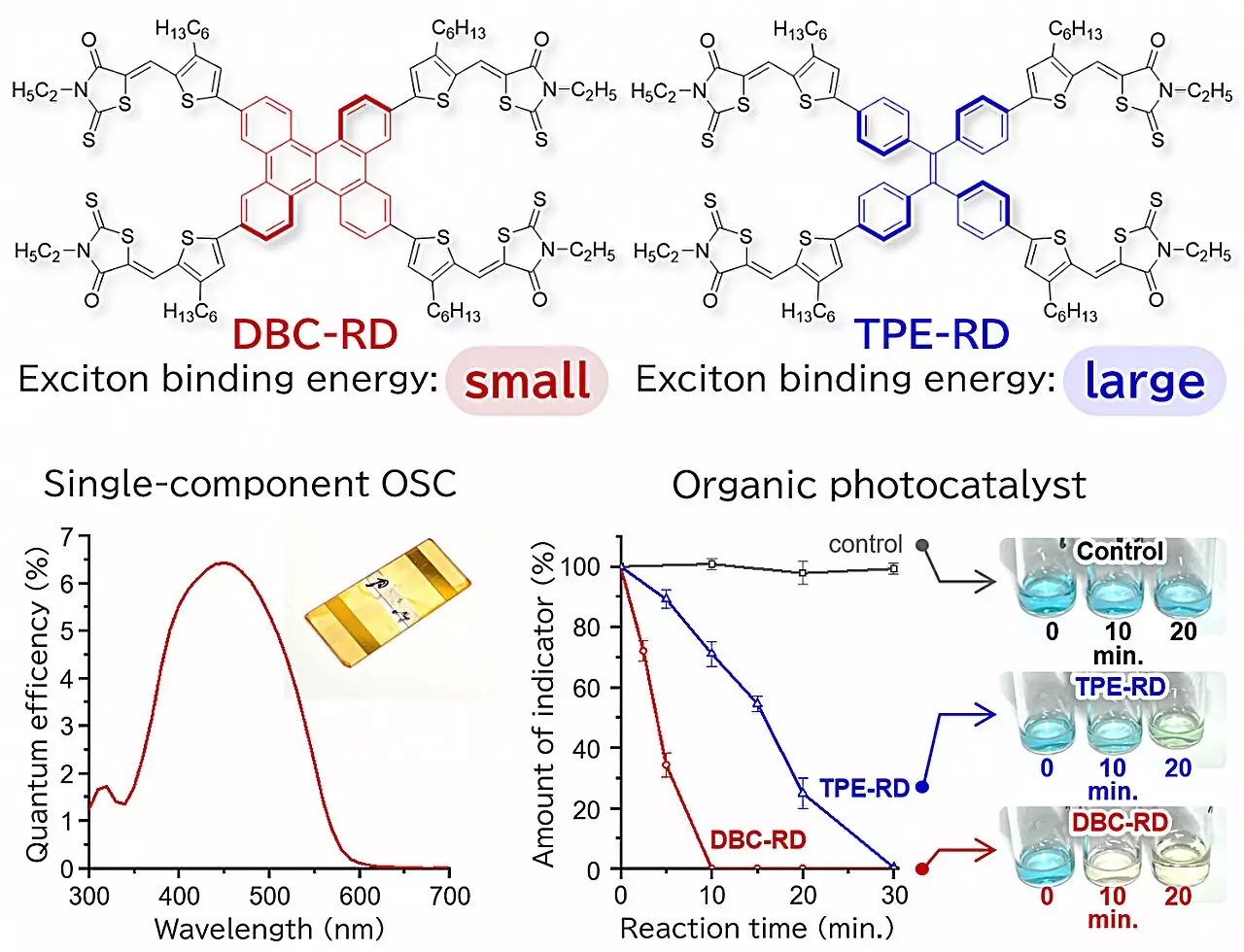Harnessing solar energy is crucial for achieving a sustainable future free from pollution and reliant on fossil fuels. Among the various technologies aimed at this goal, optoelectronic devices like solar cells play a pivotal role in converting sunlight into useful electrical energy. Recent advancements from Osaka University highlight a promising approach to enhancing solar cell efficiency through meticulous control over the arrangement of light-absorbing molecules. This breakthrough underlines the importance of molecular design in the evolution of organic optoelectronic devices.
The core mechanics of organic solar cells revolve around their ability to generate free-charge carriers, which are essential for electric current flow. This process is steered by the exciton-binding energy—an energy threshold that determines how easily light energy can be converted into usable electric charge. It is clear that minimizing exciton-binding energy is critical for improving device efficiency. However, creating organic molecules that maintain low exciton-binding energy while also achieving effective aggregation in solid states has remained a formidable challenge within the field.
The researchers at Osaka University delved deep into the effects of molecular stacking on exciton-binding energy. By synthesizing two star-shaped molecules—one featuring a rigid center and another a flexible one—they drew a significant contrast in their behavior. While both types of molecules exhibited similarity in their dispersed states, their characteristics diverged dramatically in solid form. Rigid molecules compactly arrange themselves, akin to stacking plates, which facilitates a more favorable environment for the reduction of exciton-binding energy compared to their flexible counterparts.
The experiments conducted further revealed that the rigid molecules led to superior performance in both solar cell and photocatalyst configurations due to their ability to generate a higher quantity of free-charge carriers. This outcome validates the hypothesis that good aggregation among molecules can lower exciton-binding energy—a crucial finding that could inform future molecular designs.
This innovative approach emphasizes the potential paradigm shift in the development of organic optoelectronic devices. By mastering the art of molecular aggregation, researchers can strategically reduce exciton-binding energies, enhancing overall device efficiency. As we continue to grapple with growing environmental concerns and energy demands, the integration of these findings into practical applications could catalyze significant advancements in solar energy technology.
Moreover, the implications of this research extend beyond solar cells. The principles of molecular arrangement could drive progress in various fields, including LED technology and organic photodetectors, propelling us closer to a future that embraces cleaner energy sources.
The meticulous work at Osaka University represents a significant stride toward optimizing molecular structures in optoelectronic devices. As researchers build upon these insights, the prospects of creating more effective solar technologies and other electronic applications stand on the horizon. The path to a more sustainable and energy-efficient world may very well depend on such breakthroughs in molecular engineering.

